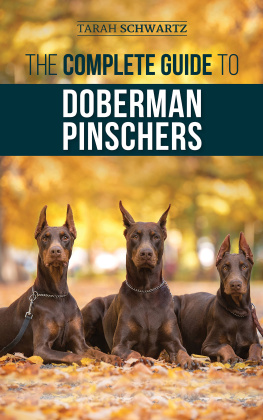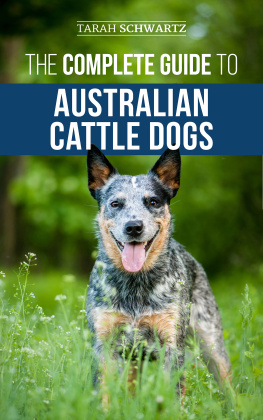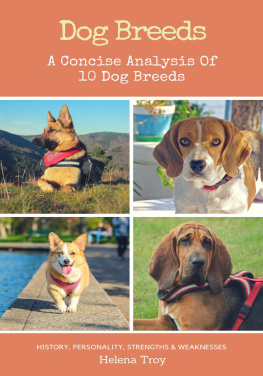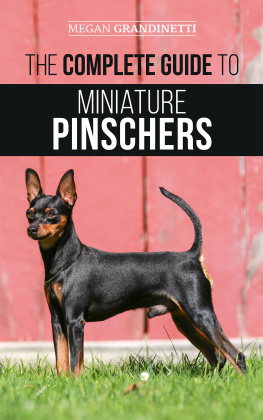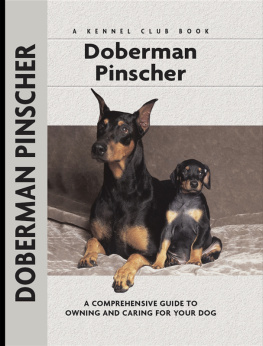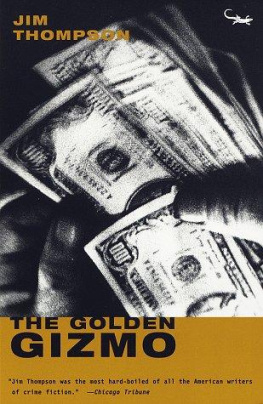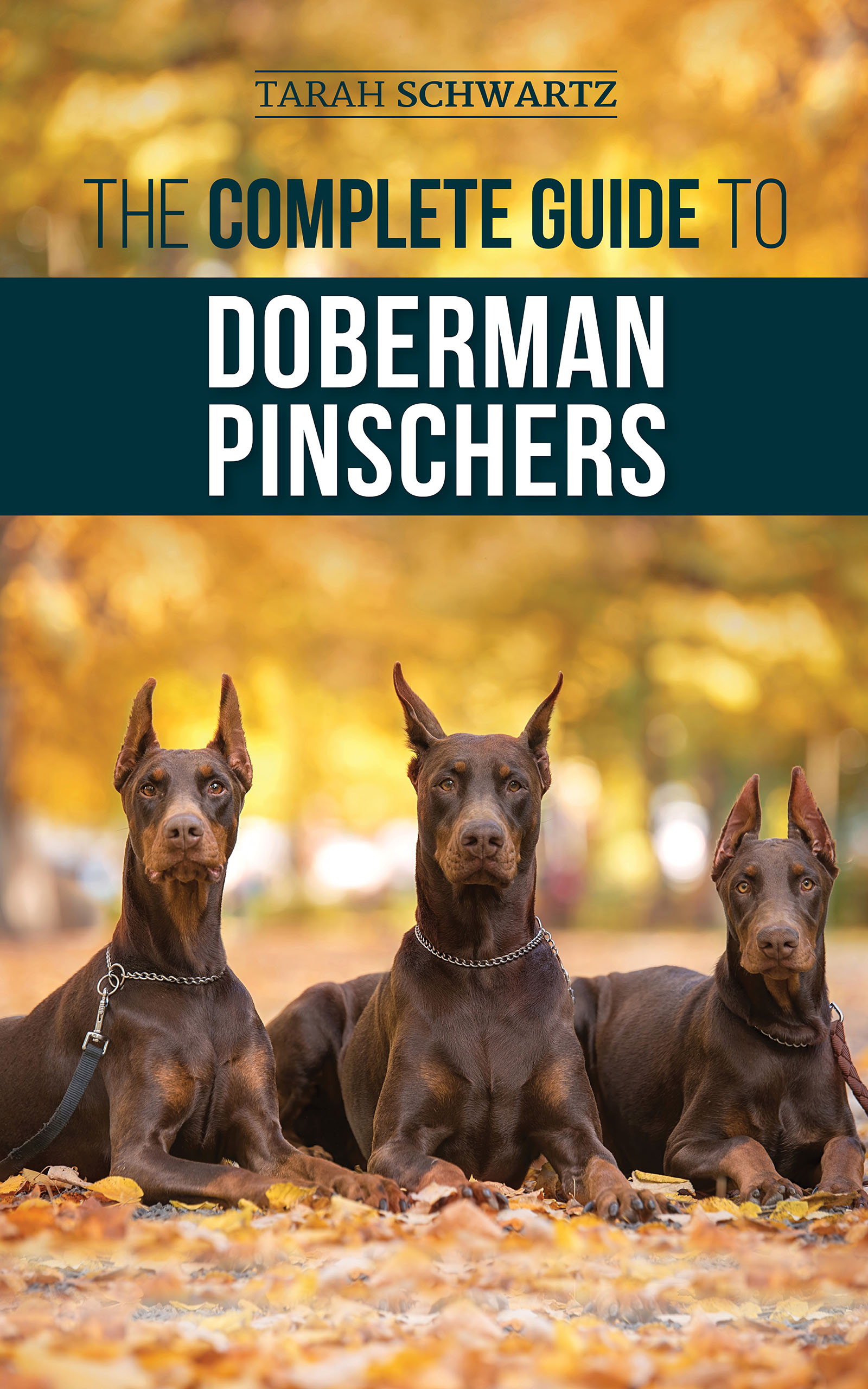Table of Contents
LP M edia Inc. Publishing
Text copyright 2 020 by LP Media Inc.
All rights reserved.
No part of this book may be reproduced or transmitted in any form or by any means, electronic or mechanical, including photocopying, recording, or by an information storage and retrieval system except by a reviewer who may quote brief passages in a review to be printed in a magazine or newspaper without permission in writing from the publisher. For information address LP Media Inc. Publishing, 3178 253rd Ave. NW, Isanti, MN 55040
www.lpmedia.org
Publication Data
Doberman Pinschers
The Complete Guide to Doberman Pinsch ers First edition.
Summary: Successfully raising a Doberman Pinscher Dog from puppy to old age Pr ovided by publisher.
ISB N: 978-1-952069-87-1
[1. Doberman Pinschers No n-Fiction] I. Title.
This book has been written with the published intent to provide accurate and authoritative information in regard to the subject matter included. While every reasonable precaution has been taken in preparation of this book the author and publisher expressly disclaim responsibility for any errors, omissions, or adverse effects arising from the use or application of the information contained inside. The techniques and suggestions are to be used at the readers discretion and are not to be considered a substitute for professional veterinary care. If you suspect a medical problem with your dog, consul t your veterinarian.
Desig n by Sorin Rdulescu
First pap erback edition, 2021
The Complete Guide to Doberman Pinschers
Tarah Schwartz
Chapter 1
The History of the Doberman Pinscher
The Origins of the Doberman Pinscher
A lthough there is some dispute on the origins of the Doberman Pinscher, many experts suggest that the breed was first created in the 1880s by a tax collector named Karl Friedrich Louis Dobermann. In addition to his work as a tax collector, Dobermann also ran a dog pound in Apolda, Germany. His work gave him access to a variety of breeds, which he combined in his quest to create a breed that could protect him as a tax collector. He desired a dog with impressive stamina, strength, and intelligence. Dobermann used terriers for their quick reaction time, and he used guarding and herding breeds for their power and intelligence. Its believed that the Beauceron, German Pinscher, Rottweiler, and Weimaraner all contributed to the creation of the breed. After Dobermanns death in 1894, a fellow breeder named Otto Goeller created the National Doberman Pinscher Club and continued to perfect and refine the breed until it resembled the mo dern Doberman.

Though the Doberman Pinscher was named in honor of its creator, many kennel clubs around the world have since dropped the name pinscher, as this is the German word for terrier and is no longer appropriate for the breed. Currently, the US and Canada are the only countries that continue to use the Pinscher name and have also dropped the second n from the creators surname.

The Doberman was first recognized by the American Kennel Club in 1908, though the breed remained relatively rare until the 1920s. The Doberman Pinscher Club of America was founded in 1921 by breeder George Earle III. After the clubs formation, Earle and a group of fellow Doberman fanciers adopted a breed standard that was first developed by German breeders. By 1934, over 1,000 Dobermans were registered each year, and the following year, the first American breed standard was implemented and approved by the American Kennel Club. The breed continued to rise in popularity, and in 1939, Ch. Ferry v Raufelsen of Giralda became the first Doberman to win Best in Show at the Westminster Kennel Club Dog Show. That title was also won by Dobermans in 1952, 1953, and 1989. In 1941, the Doberman was ranked as the 15th most popular dog breed in the United States.

Throughout the 1940s, the Doberman Pinscher was used in the military and served as sentries, messengers, and scouts. These brave canine soldiers were eventually memorialized by a statue installed in Guam by the United Doberman Club. The statue, sculpted by artist Susan Bahary, was installed in 1994 in remembrance of the courageous Doberman Pinschers that gave their lives during World War II.
Doberman Pinschers have rarely been used as military dogs after World War II, as the military has focused their need for trained canines on breeds such as the Belgian Malinois and Dutch Shepherd. Since then, Doberman Pinschers have been frequently used for search and rescue due to trainability, intelligence, and keen sense of smell. Dobermans were used in search and rescue after the World Trade Center terror ist attacks in 2001.
There are still a few Dobermans being trained for military and police purposes. In Karnataka, India, a Doberman police dog named Tunga became famous. During her career, she uncovered more than 50 murders and 60 thefts and even chased a suspect over 12 kilometers before apprehending him. In 2020, Tunga was still actively working with the police, though at 10 years old she is expec ted to retire soon.
The Modern Doberman Pinscher
Since the development of the breed, the Doberman Pinscher has continued to win the hearts of dog lovers around the world. In 2017, the American Kennel Club ranked the Doberman as the 16th mos t popular dog breed.
Not only is the Doberman Pinscher loved as a devoted and affectionate family pet, but the breed is also well known for its success in the show and sport ring. Dobermans can be seen competing in near ly every dog sport.
Stereotypes and Misconceptions about the Doberman Pinscher
Despite the Doberman Pinschers loyal and affectionate nature, the breed has gained an unfortunate reputation for being vicious and aggressive. Since the breed was originally developed as a guard dog, it was created with an intimidating stature and fearless nature. The dogs needed to willingly defend their owners from attackers, whether human or canine. Though this trait served the breed well as military working dogs, modern breeders have toned down the aggression to create a breed that is good-na tured and trainable.
The Doberman Pinschers natural suspicion of strangers makes it an excellent guard dog, but with proper training and socialization, the breed is generally sociable toward new people and dogs as long as they do not present a threat to the Dobermans family or property.
It has been suggested that American Doberman Pinschers have a calmer and more even temperament than many of the working dogs in Europe. Differing breeding strategies have created lines of Doberman Pinschers with different temperament traits. In general, the breed is considered to be mentally stable and, with proper training and socialization, is appropriate for a family environment.

